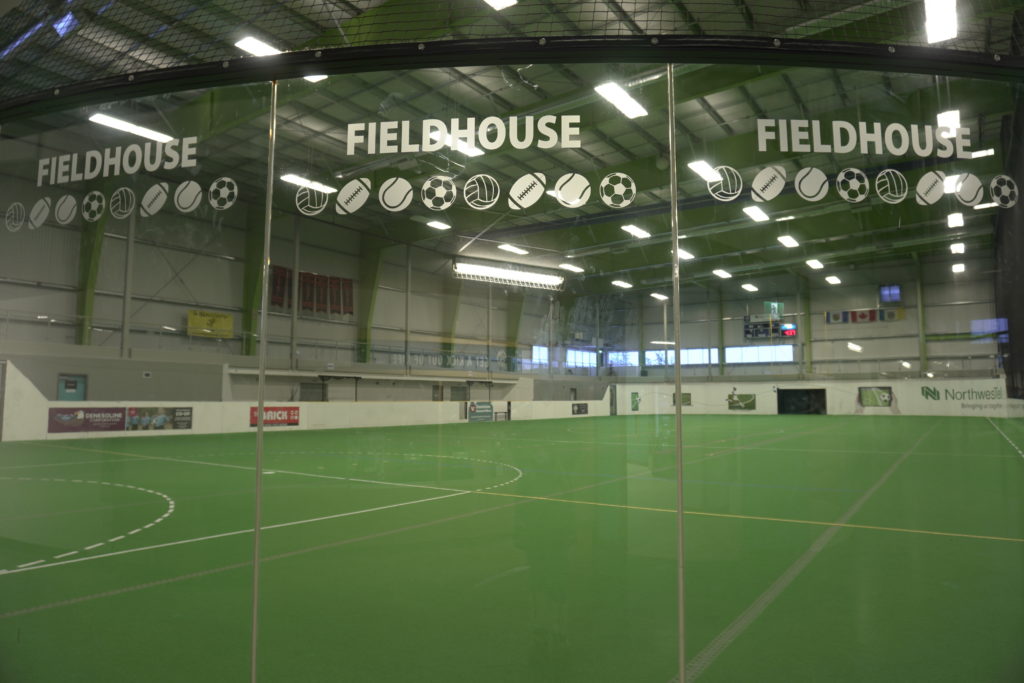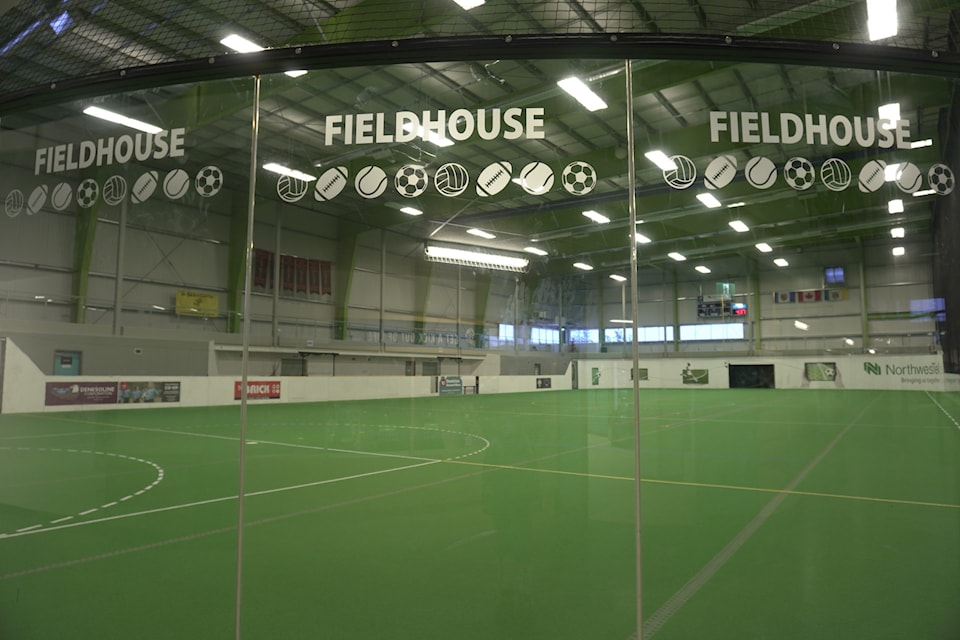If you’ve ever felt aches and pains from running in the Yellowknife Fieldhouse, you’re not alone.
For years, participants in the recreational adult soccer and ultimate Frisbee leagues have been saying that the facility is hard on joints, and many athletes are refusing to play on the artificial turf as a result.
The Fieldhouse multi-sport fields, installed in 2009-2010, are made up of nylon and polypropylene fibres atop a layer of foam and a concrete slab.

Blake Moulton is in his third indoor season with the adult soccer league.
“My ankles and knees are always killing me after a soccer game,” he said. “It’s almost after every game, and certainly the morning after a late one.”
Moulton, 27, has played on other indoor fields in Newfoundland, New Brunswick and Calgary.
The discomfort he’s been feeling, however, is unique to the Yellowknife facility.
“It’s essentially concrete with a layer of green felt, so it's painful to run on and even more so when you fall,” he said.
Despite working out four to five times a week at the gym and playing in the outdoor soccer league, Moulton said he never experiences ankle and knee pain the way he does after an indoor soccer game.
He said teammates, both current and former, have expressed similar complaints. Soccer players, aren’t the only ones speaking up.
The Yellowknife Ultimate Club also makes use of the Fieldhouse during the winter months.
The club's board of directors has launched an initiative to review the field with a goal of lobbying the city to replace the current turf.
Other Canadian indoor soccer facilities, like the Calgary North Soccer Centre and the Toronto Hangar, for example, are composed of rubber particles and sand under the turf layer to simulate an outdoor playing field.
Those types of softer fields, like the ones Moulton has played on, are more forgiving on joints.
Kaeligh Brown, a physiotherapist at Wildrose Physiotherapy, said she has heard complaints about the Fieldhouse turf's impact on knees and ankles.
The research, however, doesn’t seem to explain why. She said there isn’t strong evidence that running on concrete increases injury, and that running on harder surfaces actually helps improve bone density.
She said many factors could be at play for Yellowknife athletes’ injuries, including lifestyle, nutrition and tissue health.
It’s important to balance a weekly sports game with other physical activities to build joint strength in different ways and contribute to a healthy lifestyle overall, she said.
Brown explained that the compression hard surfaces creates on joints is good for body tissues while softer terrain creates more challenges for joint stability.
“People who engage in high-impact activities generally have healthier joints than people who don’t,” she said.
If athletes experience pain, she said their bodies might be telling them to slow down.
Still, Yellowknife athletes are drawing attention to the facility.
Michael Vatour, a member of the Yellowknife Ultimate Frisbee league, said playing weekly on the Fieldhouse turf is “not good for anybody’s body, especially old people like me.”
At age 50, he said that while he continues to endure the aches, teammates in their 20s and 30s decline to play during the winter months “because of the turf and how it impacts their joints.”
“Their bodies are giving them the middle finger,” Vatour said.
Moulton said he has considered abandoning the indoor season, but added that “soccer is one of the few outlets that keeps me busy during the dark months, so I just kind of work through it.”
Vatour is calling for a new Yellowknife facility. He predicts something larger, with a softer surface, would not only allow a higher level of training for Yellowknife athletes, it would encourage tournaments and attract tourism dollars from teams across the country coming to play.
A new Fieldhouse would bring Yellowknife athletes to the next level, Vatour said.
“These facilities just don’t work,” he said of the existing building.
